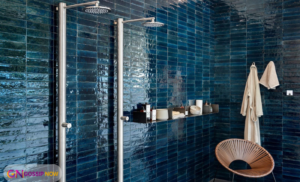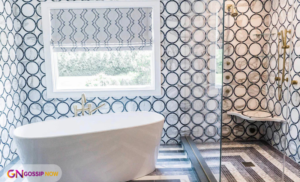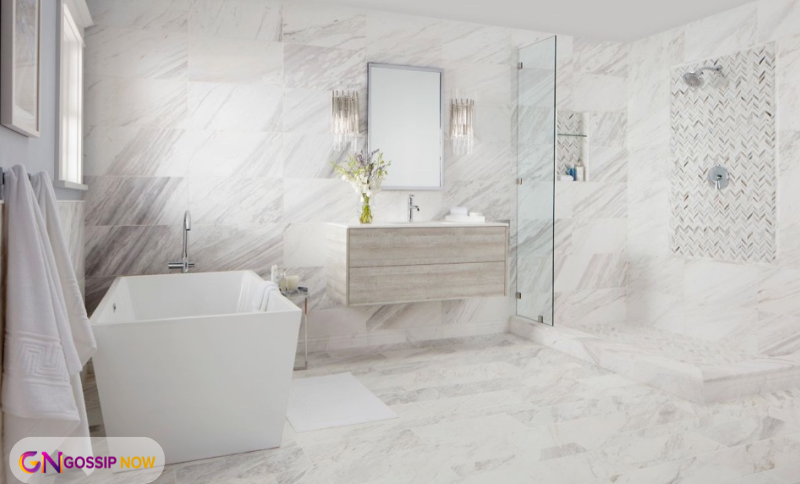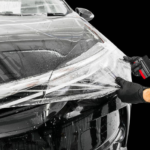Shower tile plays a crucial role in any bathroom, influencing both functionality and aesthetics. Whether you’re looking for shower_tile ideas to revamp your space or need guidance on shower tile installation, understanding different materials, colors, and maintenance techniques is essential. The right bathroom shower tile can enhance the ambiance and value of your home while ensuring durability and easy upkeep.
Best Shower Tile Ideas for a Stylish Bathroom

Choosing the right shower_tile can be overwhelming with so many styles available. Here are some of the top bathroom shower tile ideas to inspire your next renovation.
1. Classic White Shower Tile
White shower tile is timeless and creates a clean, fresh look. It brightens up any space and makes small bathrooms feel more open. Pair it with dark grout for a modern contrast or opt for a glossy finish for a sleek touch.
2. Bold and Beautiful Blue Shower Tile
Blue shower_tile adds a tranquil, spa-like atmosphere to your bathroom. From deep navy hues to soft aqua tones, blue tiles can create an inviting and luxurious space.
3. Walk-In Shower Tile Ideas for a Spacious Feel
Walk-in showers are increasingly popular for their open, airy feel. Consider large-format tiles to minimize grout lines or use patterned tiles for a striking accent wall.
4. Unique Textured Tiles
Textured tiles provide visual interest and a tactile experience. They also help prevent slipping, making them a practical choice for shower floors.
5. Mosaic and Subway Tile Combinations
Mixing mosaic with subway tiles creates a stunning contrast and allows for creative designs. Use mosaic tiles for a focal point in niches or along accent walls.
6. Natural Stone Tiles for a Luxury Look
Natural stone tiles, such as marble, travertine, and slate, add a sophisticated touch to any bathroom. They provide a rich, organic look but require proper sealing to prevent water damage.
7. Large Format Tiles for a Minimalist Appeal
Using large-format tiles reduces the number of grout lines, making cleaning easier and giving your bathroom a seamless, modern appearance.
Shower Tile Installation: A Step-by-Step Guide
Installing shower tile properly is crucial to prevent water damage and ensure longevity. Follow these key steps for a professional-looking result:
1. Prepare the Surface
- Ensure the shower walls are clean and dry.
- Use a waterproof backer board to prevent moisture issues.
- Apply a vapor barrier to protect against water infiltration.
2. Plan the Layout
- Dry-fit tiles before applying adhesive.
- Use spacers to maintain uniform grout lines.
- Start from the center and work outward for symmetrical placement.
3. Apply Tile Adhesive
- Spread thin-set mortar evenly with a notched trowel.
- Press tiles firmly into place, following your layout.
- Use a level to check alignment.
4. Grout and Seal
- Once tiles are set, apply grout between the gaps.
- Choose stain-resistant grout to keep tiles looking fresh.
- Seal grout to prevent stains and water damage.
5. Final Touches
- Wipe down tiles to remove excess grout residue.
- Allow tiles to cure for at least 24 hours before use.
- Install trim or decorative edging for a polished look.
Shower Tile Maintenance: Keeping Your Tiles Spotless

Proper maintenance extends the life of your bathroom shower tile and keeps it looking fresh. Here are essential tips for cleaning and upkeep:
1. Use a Shower_Tile Cleaner Regularly
A good shower_tile cleaner removes soap scum, mold, and grime. Opt for pH-neutral solutions to avoid damage.
2. Prevent Mold and Mildew
- Keep the bathroom ventilated.
- Wipe down tiles after each shower.
- Install a dehumidifier to reduce moisture levels.
3. Reapply Grout Sealer Annually
Sealing grout prevents water absorption and discoloration, keeping your tiles looking new.
4. Avoid Harsh Chemicals
Bleach and ammonia-based cleaners can damage tile surfaces and grout. Stick to mild, natural solutions like vinegar and baking soda.
Shower Tile Paint: A Budget-Friendly Refresh
If replacing tiles isn’t an option, shower tile paint can transform your bathroom at a lower cost. Choose waterproof, mildew-resistant paint for the best results.
How to Paint Shower_Tiles
- Clean the Tiles – Remove dirt, grease, and soap scum.
- Sand the Surface – Lightly sand tiles for better paint adhesion.
- Apply Primer – Use a high-quality bonding primer suitable for tiles.
- Paint with Waterproof Tile Paint – Apply 2-3 coats, letting each coat dry completely.
- Seal the Paint – Use a clear waterproof sealant for durability.
Bio Table
| Feature | Details |
|---|---|
| Primary Material | Ceramic, Porcelain, Glass, Natural Stone |
| Best for | Walls, Floors, Accents |
| Maintenance Level | Low to Moderate |
| Durability | High |
| Popular Colors | White, Blue, Gray, Neutral Tones |
| Installation Difficulty | Moderate to Advanced |
| Average Lifespan | 15-20 Years |
| Cleaning Frequency | Weekly |
Final Thoughts:
In conclusion, selecting the right shower_tile is essential for enhancing your bathroom’s aesthetic and functionality. Whether you choose classic white shower tile, bold blue shower_tile, or walk-in shower tile ideas, the possibilities are endless. More importantly, maintaining and sealing your tiles regularly will ensure long-term durability. So, start planning your renovation today and transform your shower into a stunning and functional space!
FAQs
1. What is the best type of tile for a shower?
To ensure durability and water resistance, porcelain and ceramic tiles are the best choices because they are easy to maintain and long-lasting.
2. Can I paint shower tiles?
Absolutely! If you want an affordable update, shower tile paint is a great option. Just make sure to use waterproof and mildew-resistant paint.
3. How do I prevent mold on shower tiles?
First, always ensure proper ventilation. Then, make it a habit to wipe down tiles after showers and regularly use mold-resistant grout sealer.
4. How often should I reseal grout?
Without a doubt, grout should be resealed annually. This helps prevent stains, moisture penetration, and mildew buildup.
5. What’s the easiest shower tile to clean?
To simplify cleaning, glossy, large-format tiles are the best choice since they require less scrubbing and have fewer grout lines.
6. Can I use wallpaper instead of shower tiles?
Technically, waterproof wallpaper exists. However, for longevity and moisture resistance, tile is the better option.
7. What is the cost of tiling a shower?
Typically, the cost depends on materials and labor, but it usually ranges from $1,000 to $3,000 for a standard shower.






